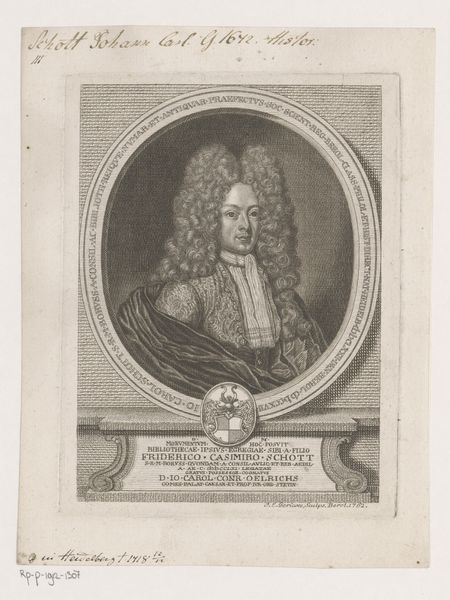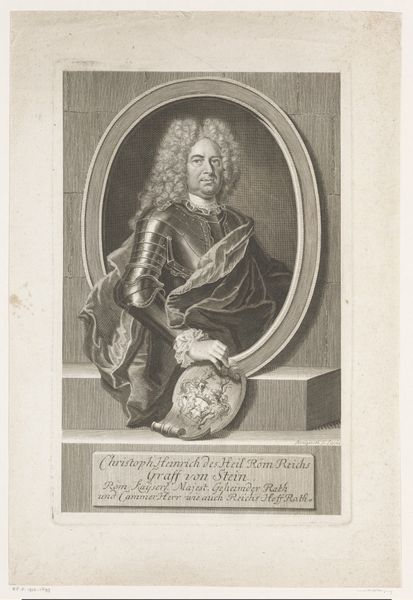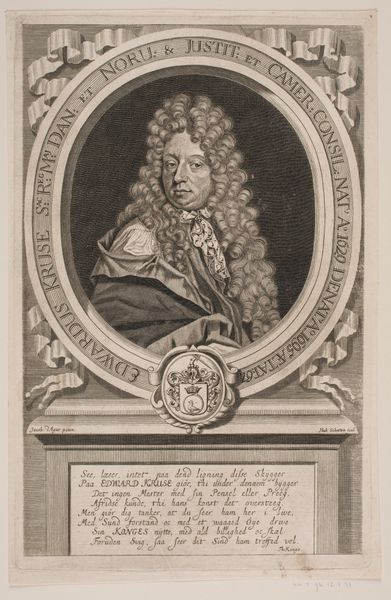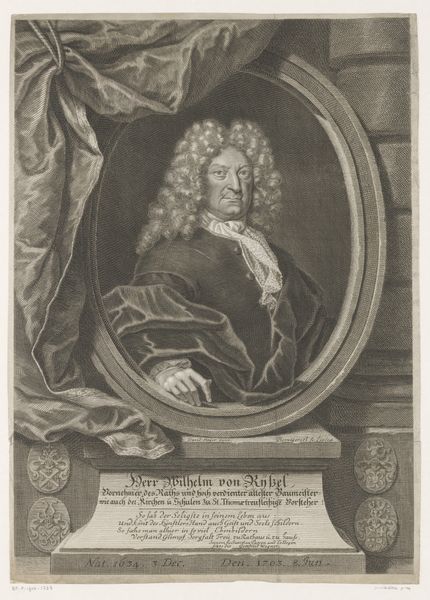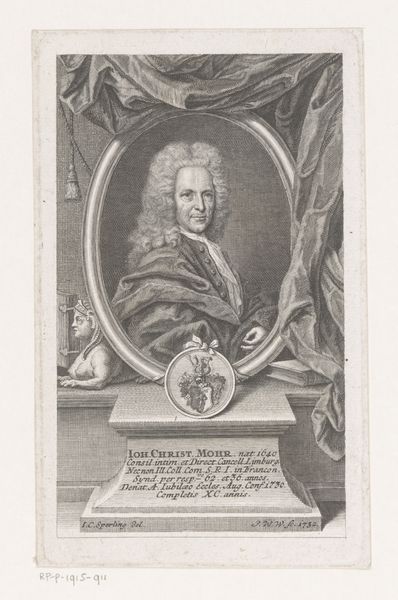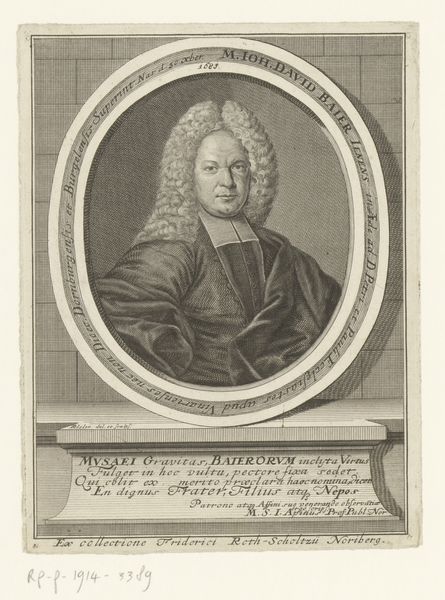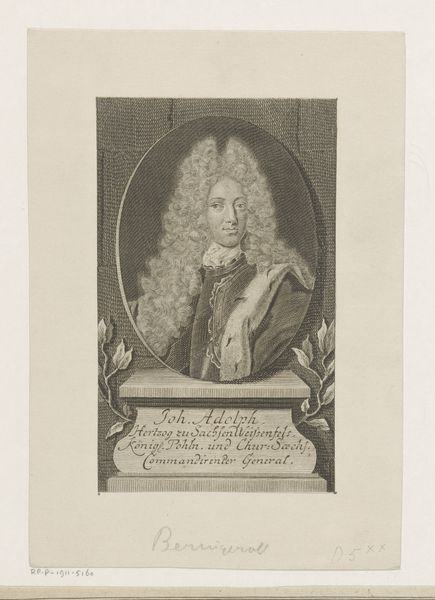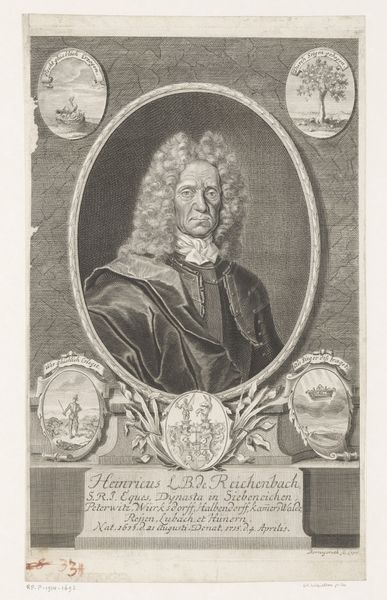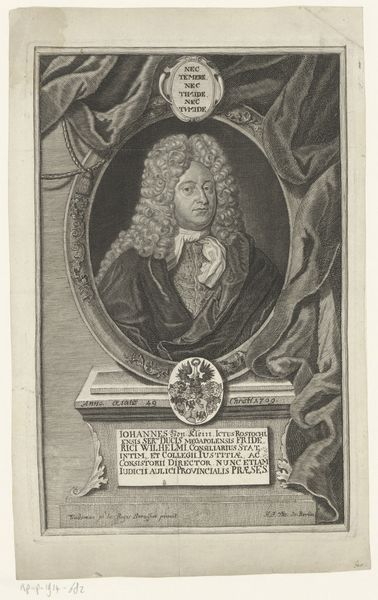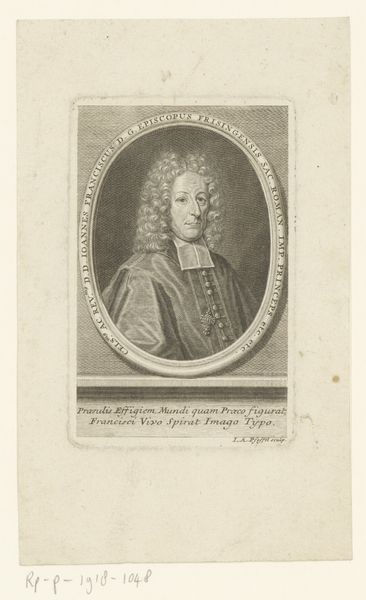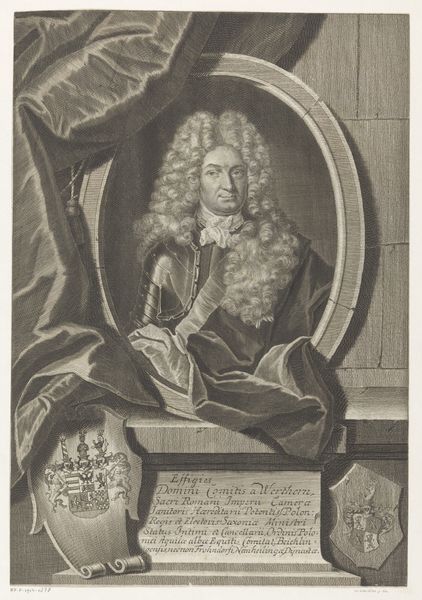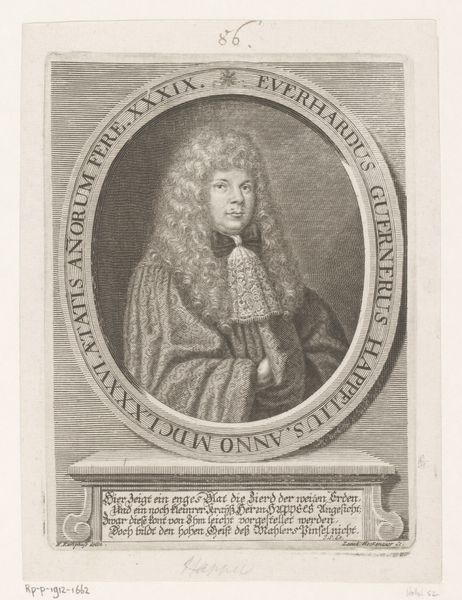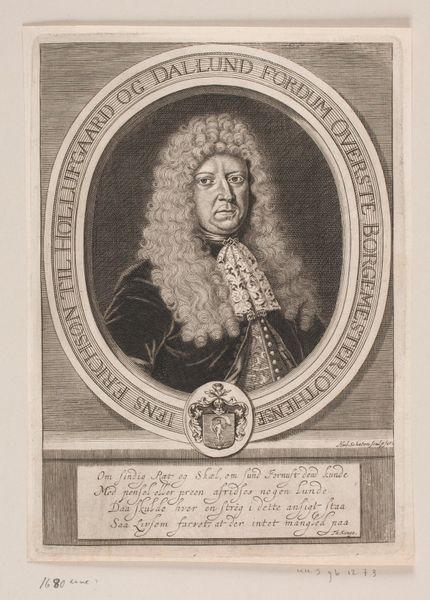
engraving
#
portrait
#
baroque
#
old engraving style
#
figuration
#
line
#
history-painting
#
engraving
Dimensions: height 152 mm, width 93 mm
Copyright: Rijks Museum: Open Domain
Curator: Martin Bernigeroth produced this engraving, "Portret van Carl Otto Rechenberg," in 1716. It's quite an impressive piece of line work. Editor: My first impression is that this image speaks of status and the rigidity of social expectations in the Baroque era. It is more than a portrait, it feels like a statement. Curator: Indeed, the act of creating such detailed engraving suggests the laborious and time-intensive process of replicating imagery at the time. How do you read that process into the message of status? Editor: The deliberate crafting, with its need for expertise and the use of costly materials like the paper itself, immediately associates it with privilege. Carl Otto Rechenberg’s likeness becomes a manufactured object of social significance. It reinforces ideas about power being something fabricated and sustained through representation. Curator: It's interesting you frame the image-making as an active element. Note the textural contrast Bernigeroth achieved, how the density of the lines describe the drape and volume of the robe against the smooth, bare page behind it. The labour inherent in making these marks makes a valuable object that carries meaning and value. Editor: Exactly, the sharp, confident lines project a persona meant to last, embedded with clear signifiers of elite identity in clothing, hairstyle, and accoutrements of knowledge or influence we cannot fully see in the print. What would access to the technologies of engraving in 1716 have meant to a burgeoning bourgeois class, hungry for power, influence and legacy? Curator: Thinking about consumption, these engravings likely circulated among a specific audience, reinforcing a particular social order through representation. It shows that these processes have social impacts that reach beyond mere aesthetic qualities. Editor: These works actively contributed to shaping societal narratives. The way power, influence, and knowledge are displayed for the gaze has immense implications even today. The piece also calls attention to questions of visibility, of who had their likeness reproduced. Curator: So by inspecting closely the means and context through which imagery comes into being, and for what markets, it can reveal so much about material and ideological conditions of production and circulation at different moments in time. Editor: Indeed. Looking closely, we’ve unearthed just how much history is etched in these lines, transforming what seems like a mere portrait into a rich archive of socio-political power dynamics.
Comments
No comments
Be the first to comment and join the conversation on the ultimate creative platform.
